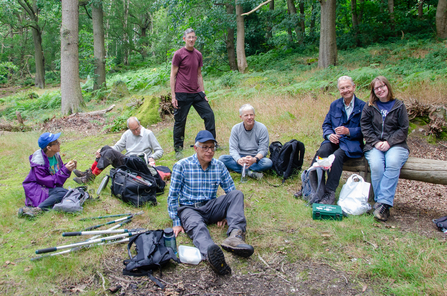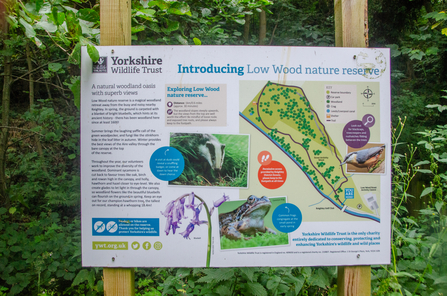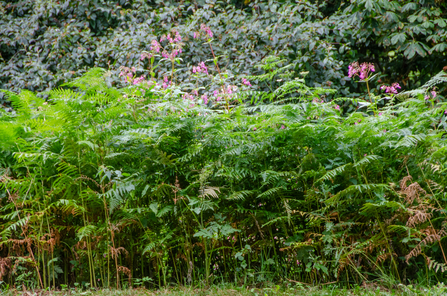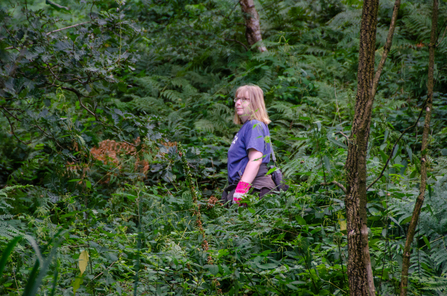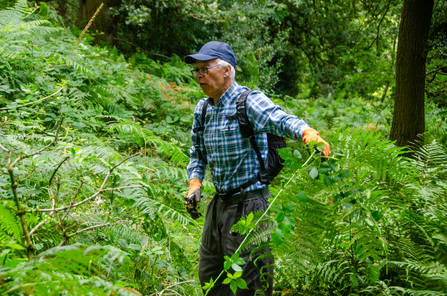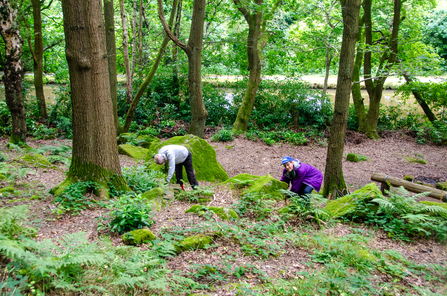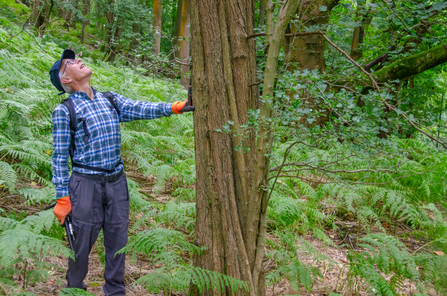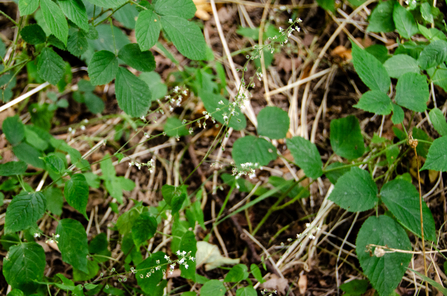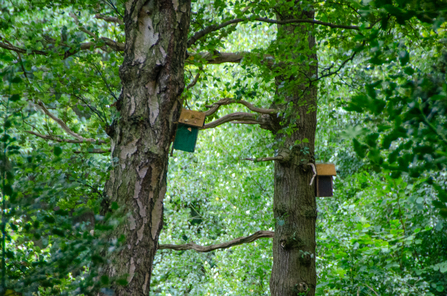When the Summer 2024 Practical Conservation Calendar arrived in my inbox, I spotted a ‘woodland conservation’ Task Day at Low Wood, near Keighley in West Yorkshire. I’d not been involved in woodland maintenance before, and was intrigued about what this would involve so I contacted the Task Day Leader John Preshaw.
John, a YWT volunteer himself, has led tasks at Low Wood for the past 12 years and said I’d be welcome to join them. He explained we would be carrying out a range of conservation tasks in the wood which situated on a Millstone Grit escarpment bordered by the Leeds to Liverpool canal. The tree covered hillside forms part of the Airedale Greenway, a combined walking and cycling route connecting Keighley, Bingley, Saltaire and Shipley.
In early August, I found myself following John’s directions through a housing estate on the edge of Keighley. It was a considerable contrast to arrive at the car park at Low Wood Scout Activity Centre. I had dressed as instructed, in old clothes, stout boots, and carrying waterproofs, gloves and a picnic I met John and six other volunteers from the Low Wood Supporters Group.


